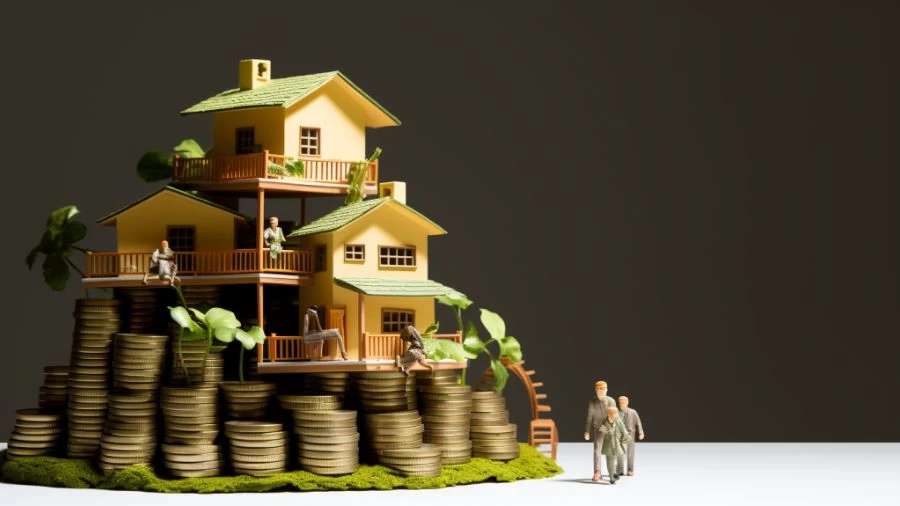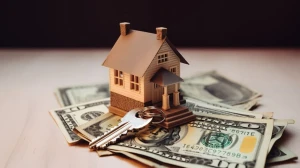
How to Apply for Home Improvement Loan?
To apply for a home improvement loan, assess your needs, evaluate your credit, get prequalified from multiple lenders, and consider interest rates influenced by your credit profile.
Published Aug 16, 2023 | Updated Jan 20, 2024 | 📖 8 min read
What is a Home Improvement Loan?
A home improvement loan is a financial product designed to provide homeowners with the funds needed to renovate, repair, or enhance their properties. These loans are specifically tailored to cover the costs associated with home improvement projects, ranging from kitchen upgrades and bathroom remodels to roof repairs and room additions. Home improvement loans come in various forms, including unsecured personal loans, home equity loans, and home equity lines of credit (HELOCs).
Unsecured personal loans do not require collateral and are based on the borrower's creditworthiness, while home equity loans and HELOCs use the home itself as collateral. The choice of loan type depends on factors such as the project's scope, the homeowner's credit profile, and their preferences regarding interest rates and repayment terms. Ultimately, a home improvement loan provides homeowners with a structured and accessible way to invest in their homes and enhance their living spaces.
How to Apply for a Home Improvement Loan?
Should you opt for a home improvement loan as your preferred financing route, adhere to these steps to ensure a successful application process,
- Determine Funding Requirement: Begin by assessing the amount of funds you require for your project. Account for any potential origination fees that could be deducted from your loan amount.
- Assess Your Credit Score: Your credit score significantly impacts the Annual Percentage Rate (APR) you'll be offered. A higher credit score generally results in more favorable rates. If your credit score is fair or poor, consider enlisting a co-signer to potentially secure more advantageous interest rates.
- Secure Prequalification: Prior to committing, seek prequalification from multiple lenders. This step enables you to explore interest rates across various lenders without affecting your credit score negatively.
- Conduct Rate and Term Comparison: Survey a range of lenders, spanning traditional banks, credit unions, and online lending platforms. This comparison aids in identifying the most attractive deal based on rates and loan terms.
- Complete Application Process: As part of the application procedure, furnish the required documentation. This typically encompasses pay stubs, tax returns, and personal identification. Providing accurate and comprehensive documentation ensures a smoother application process.
Home Improvement Loan Interest Rates
Presently, interest rates for home improvement loans span a spectrum from approximately 6.50 percent to 36 percent. However, the precise rate you secure hinges on a confluence of variables. Foremost among these factors are your credit score, annual income, and debt-to-income ratio. These metrics collectively shape the lender's assessment of your financial stability and repayment capacity.
A good credit score often leads to more favorable rates, as it signifies a lower credit risk. Conversely, higher debt-to-income ratios might lead to increased interest rates, reflecting a potential higher lending risk.
Additionally, annual income plays a pivotal role, with higher incomes often associated with reduced interest rates. In sum, the interplay of these factors culminates in the final interest rate offered by the lender. It's prudent for borrowers to enhance their credit profile and manage debt to secure more advantageous rates and terms for their home improvement endeavors.
Where to Get Home Improvement Loans?
Banks commonly demand stringent criteria but offer attractive interest rates. Conversely, peer-to-peer lenders are more flexible in their evaluation process, factoring in diverse aspects. However, their interest rate caps can be higher due to the increased risk associated with borrowers possessing limited credit history or suboptimal credit scores. Exploring these sources empowers borrowers to select a home improvement loan avenue aligned with their financial profile and preferences. Similar to various loan types, home improvement loans are accessible through diverse channels, including,
Banks
Established financial institutions like banks proffer home improvement loans. While they offer favorable interest rates, they often impose stricter prerequisites.
Credit Unions
These cooperative financial entities also extend home improvement loans. They may offer competitive rates and terms, catering to their members' needs.
Online Lenders
Online platforms provide a convenient avenue for obtaining home improvement loans. They offer a range of rates and terms, appealing to different borrower profiles.
Peer-to-Peer Lenders
Peer-to-peer lending platforms connect borrowers with individual investors. These lenders consider factors beyond credit score, such as employment and educational background. However, they may have comparatively higher interest rate caps, accommodating higher-risk borrowers.
How to Get a Home Improvement Loan?
Acquiring a home improvement loan is a relatively straightforward process, though the abundance of options can be overwhelming. Determining the suitable financing choice hinges on your financial status, credit score, and budget, influencing the kind of improvement loan that aligns with your needs. Here's a step-by-step guide to securing a home improvement loan:
- Four primary options exist for financing home improvements: personal loans, credit cards, home equity loans, and home equity lines of credit (HELOCs). Each has distinct advantages and drawbacks, and your choice should reflect your project's scope, budget, and flexibility requirements.
- After selecting a loan type, compare different lenders for their interest rates, fees, borrower criteria, and terms. This comparison is crucial as it directly impacts the overall cost of your loan.
- Prepare essential documents, including a valid ID (such as a driver's license), proof of income (pay stubs or tax returns), and evidence of residence (utility bills or bank statements).
- Opt for lenders offering a prequalification process to gauge your approval likelihood, projected interest rate, and loan cost without affecting your credit score. You can prequalify with multiple lenders to facilitate accurate comparisons.
- Finalize your application with your preferred lender by providing necessary information. Be prepared for additional paperwork or details as requested by the lender.
- Upon approval, your lender will deposit the home improvement loan funds into your designated bank account. You can then use the funds for your project and begin repaying the loan through regular monthly installments.
Remember, thorough research, comparison, and careful consideration of your financial situation are vital steps in securing a home improvement loan that aligns with your needs and financial capacity.
What Are the Pros and Cons of Home Improvement Loans?
On the positive side, these loans often provide security with unsecured options, swift approval processes, and fixed interest rates, contributing to predictable monthly payments and potential credit score enhancement. However, caution is advised, considering potential drawbacks like additional fees, high Annual Percentage Rates (APRs), and the risk of overborrowing leading to financial strain and a cycle of debt. Understanding these pros and cons is crucial for informed decision-making in the realm of home improvement financing.
Pros of Home Improvement Loans
- Many home improvement loans are unsecured, providing reassurance that your home won't be at risk if you're unable to repay the loan.
- These loans often offer quick approval, typically within the same day or a few days, ensuring timely access to funds.
- Home improvement loans feature fixed interest rates, ensuring consistent and predictable monthly payments throughout the loan term.
- By diversifying your credit mix and demonstrating responsible payment history, these loans can potentially elevate your credit score.
Cons of Home Improvement Loans
- Home improvement loans may entail fees such as origination fees and late fees, increasing the overall cost of the loan beyond the initial amount borrowed.
- Some loans carry high Annual Percentage Rates (APRs), resulting in substantial interest expenses that could add up to thousands of dollars over time.
- Borrowing beyond your financial capacity could lead to a cycle of debt, potentially straining your finances and hindering repayment.
What Are the Types of Home Improvement Loans?
Each option serves distinct needs, so evaluate your situation before choosing the best-suited home improvement loan. Here is the list of Types of Home Improvement Loan,
Personal loans
Personal loans are unsecured and versatile, suitable for various purposes. They typically offer interest rates below 7 percent and flexible repayment terms of up to seven years. Ideal for: Borrowers seeking non-collateralized loans and individuals with good credit. Caution: Potential for high-interest rates and fees; compare multiple offers before finalizing. Start when: You know the required amount and your credit health. Funds can be swiftly disbursed, often within the same or next day of approval. Initiate by: Identify lenders matching your credit range and desired loan amount. Get prequalified with at least three lenders for the best deal.
Home equity loans
Secured by your home, these lump-sum loans yield lower interest rates compared to personal loans. Best suited for: Homeowners with over 15 percent equity, aiming to avoid higher interest rates of personal loans. Beware Home used as collateral; defaulting can lead to home loss. Start when: Confident about borrowing needs and sufficient equity. Plan ahead as home appraisals and approval processes take longer. Begin by: Compare lenders, choose one, and proceed as directed in their application process.
Home equity line of credit (HELOC)
A revolving credit line tied to your home's equity, allowing flexible withdrawals as required. Perfect for: Larger projects with uncertain costs; offers flexibility for project variations. Watch out: Overspending or borrowing beyond repayment capacity is a risk. Secured by home, non-payment could lead to home forfeiture. Start when: Plan ahead due to home appraisal requirements. Get going: Compare lenders, identify suitable options, apply, and adhere to their guidance.
How to Apply for Home Improvement Loan - FAQs
1. What is a home improvement loan?
A home improvement loan is a type of financing used to fund renovations or repairs in your property.
2. How does a home improvement loan work?
A home improvement loan provides funds upfront for your renovation projects, which you then repay with interest over a specified period.
3. What are the types of home improvement loans?
Common types include personal loans, home equity loans, home equity lines of credit (HELOCs), and contractor financing.
4. How can I qualify for a home improvement loan?
Lenders consider factors such as credit score, income, and the amount of equity you have in your home.
5. What are the benefits of a home improvement loan?
Home improvement loans offer flexibility, predictable payments, and the potential to increase your property's value.




